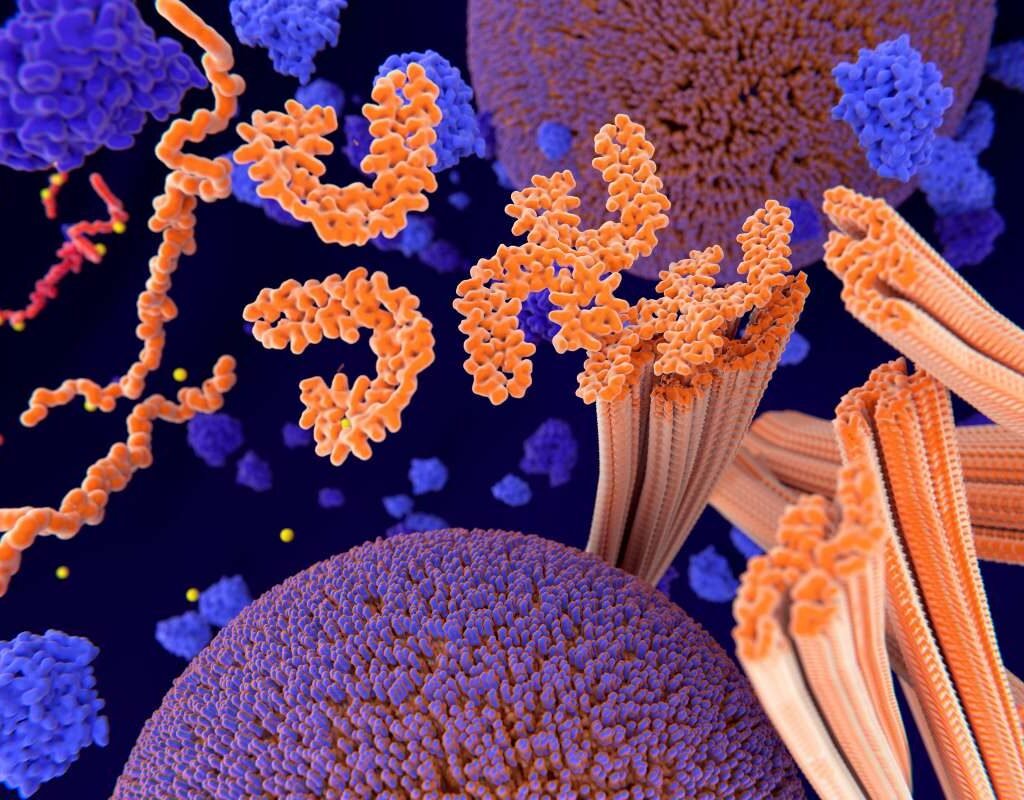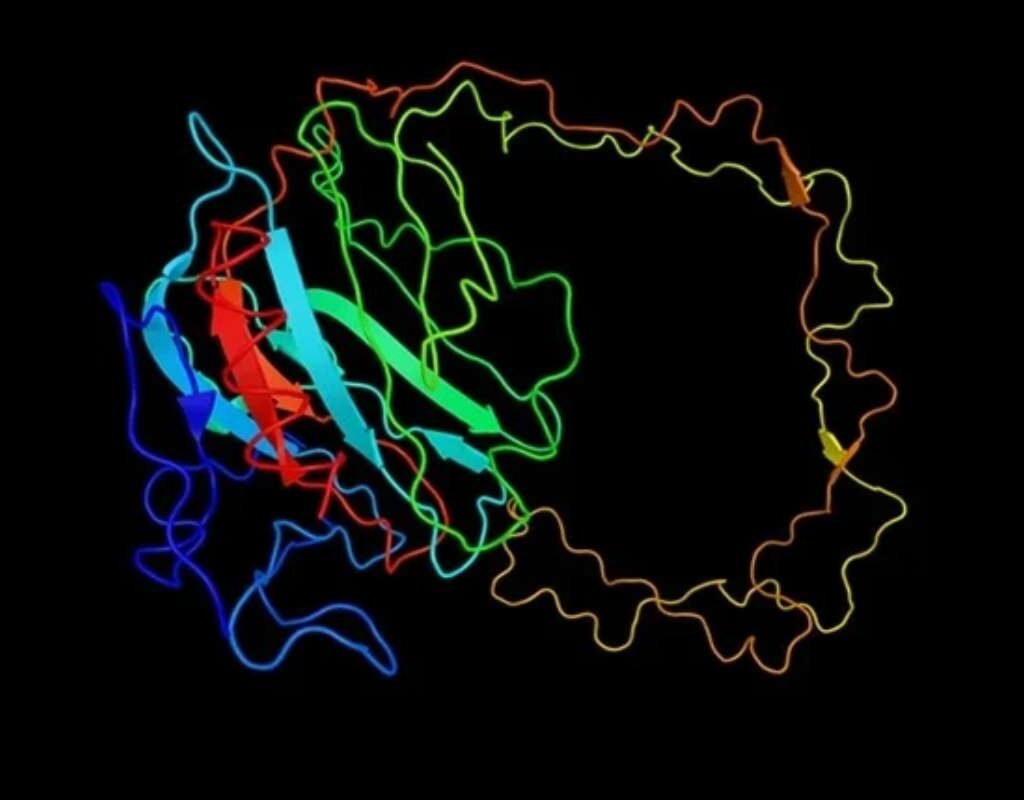Alzheimer’s disease (AD) is a progressive neurodegenerative brain disorder that destroys memory and other cognitive functions, which results in the cause of dementia eventually. A growing body of evidence emphasizes protein misfolding as a critical biological phenomenon associated with Alzheimer’s disease. In this article, we will uncover the relationship between protein misfolding in Alzheimer’s disease which is key to unraveling the original cause of this condition and developing the proper course of treatment.
What is Protein Misfolding?
Proteins are the essential workhorses of cellular processes. They perform critical functions ranging from enzymatic activity to structural support. For proteins to function correctly, they must fold into precise three-dimensional shapes. Protein misfolding refers to the process by which proteins fail to attain or maintain their intended structure. When proteins misfold, they lose functionality and can form abnormal aggregates, leading to cellular dysfunction.
Protein Misfolding in Alzheimer’s Disease

Protein misfolding in Alzheimer’s disease is particularly significant due to the role of two specific proteins: amyloid-beta (Aβ) and tau. These proteins are central to AD pathology and are directly involved in the characteristic plaques and tangles observed in the brains of those with the disease. Let’s explore how these proteins contribute to AD through misfolding.
1. Amyloid-Beta (Aβ) and Plaque Formation
One of the hallmark features of Alzheimer’s disease is the accumulation of amyloid-beta plaques in the brain. Amyloid-beta is a small protein fragment that arises from the cleavage of a larger protein called amyloid precursor protein (APP). Aβ is produced in minimal amounts in healthy brains and typically cleared efficiently. However, in individuals with Alzheimer’s, Aβ production increases or clearance mechanisms fail, leading to an excess of this protein in the brain.
Protein misfolding in Alzheimer’s disease occurs when Aβ aggregates into insoluble fibrils. These fibrils clump together to form amyloid plaques, which deposit between neurons. The accumulation of amyloid plaques disrupts cell-to-cell communication, triggers inflammatory responses, and contributes to neuronal death. Although Aβ plaques alone do not directly cause cognitive decline, their presence is a significant contributor to the progression of the disease.
2. Tau and Neurofibrillary Tangles

Tau is another critical protein involved in Alzheimer’s disease. In healthy neurons, tau supports the structural stability of microtubules, which are essential for intracellular transport. However, in Alzheimer’s disease, tau undergoes hyperphosphorylation, leading to its misfolding. Misfolded tau proteins detach from microtubules and form twisted threads known as neurofibrillary tangles.
These tangles accumulate inside neurons, disrupting essential cellular functions and ultimately leading to cell death. The extent of tau pathology, particularly the spread of neurofibrillary tangles throughout the brain, correlates strongly with cognitive decline and disease severity in Alzheimer’s patients.
How Protein Misfolding in Alzheimer’s Disease Affects the Brain?
The misfolding of Aβ and tau leads to widespread consequences in the brain. These include:
- Synaptic Dysfunction: Misfolded proteins interfere with synaptic communication, disrupting the ability of neurons to transmit signals. This impairment is a fundamental reason for memory loss and cognitive deficits in Alzheimer’s patients.
- Neuroinflammation: Misfolded proteins activate immune responses in the brain. Microglia, the brain’s immune cells, attempt to clear amyloid plaques but often exacerbate damage by releasing inflammatory molecules, which contribute to further neuronal injury.
- Oxidative Stress: Misfolded proteins are linked to increased oxidative stress, leading to further cellular damage. Oxidative stress occurs when there is an imbalance between the production of harmful free radicals and the body’s ability to neutralize them, resulting in damage to proteins, lipids, and DNA.
- Cell Death: As a result of protein misfolding, neuronal cells lose their ability to function properly and eventually die. The loss of neurons is a key feature in the progression of Alzheimer’s disease, leading to the characteristic brain atrophy seen in advanced stages of the disease.
The Molecular Mechanisms of Protein Misfolding
Protein misfolding in Alzheimer’s disease involves several molecular pathways. One of the most studied mechanisms is the amyloid hypothesis, which suggests that the accumulation of misfolded Aβ is the primary event driving the disease process. According to this hypothesis, Aβ aggregation triggers a cascade of events, including tau pathology, inflammation, and oxidative stress, leading to neuronal dysfunction and death.
Another emerging theory involves the role of prion-like spreading. Misfolded proteins, particularly tau, may propagate from one cell to another, much like infectious prions in diseases such as Creutzfeldt-Jakob disease. This prion-like mechanism could explain the progression of Alzheimer’s disease, where misfolded tau spreads from one brain region to another, correlating with the advancement of symptoms.
Current Research and Therapeutic Approaches

Given the central role of protein misfolding in Alzheimer’s disease, significant research efforts have focused on understanding and targeting these processes to develop treatments. Some of the most promising approaches include:
- Anti-Amyloid Therapies: These treatments aim to reduce the production of amyloid-beta or enhance its clearance from the brain. Drugs such as monoclonal antibodies (e.g., aducanumab) are designed to target amyloid plaques, although their clinical efficacy remains a subject of ongoing debate.
- Tau-Targeting Therapies: Researchers are also exploring ways to prevent tau aggregation or promote the clearance of neurofibrillary tangles. Anti-tau antibodies and small molecules that inhibit tau phosphorylation are under investigation.
- Chaperone Proteins: Chaperone proteins assist in the proper folding of proteins. Enhancing the activity of these proteins may help prevent misfolding or promote the refolding of misfolded proteins, offering a potential therapeutic avenue for Alzheimer’s disease.
- Proteostasis Regulation: The concept of proteostasis refers to the balance of protein synthesis, folding, and degradation. Therapeutic strategies aimed at enhancing the brain’s natural proteostasis mechanisms may help mitigate the effects of protein misfolding in Alzheimer’s disease.
Conclusion
Protein misfolding in Alzheimer’s disease is a vital component in the growth and progress of this brain disorder. The collection of misfolded amyloid-beta and tau protein leads to synaptic dysfunction, oxidative stress, neuroinflammation, and neuronal death. As our understanding of this condition continues to advance, it also offers hope for the development of an advanced treatment that focuses on the core function of the disease. Research into therapies targeting amyloid and tau, as well as methods to enhance proteostasis, has the potential to slow or halt Alzheimer’s progression, offering hope for those affected.







